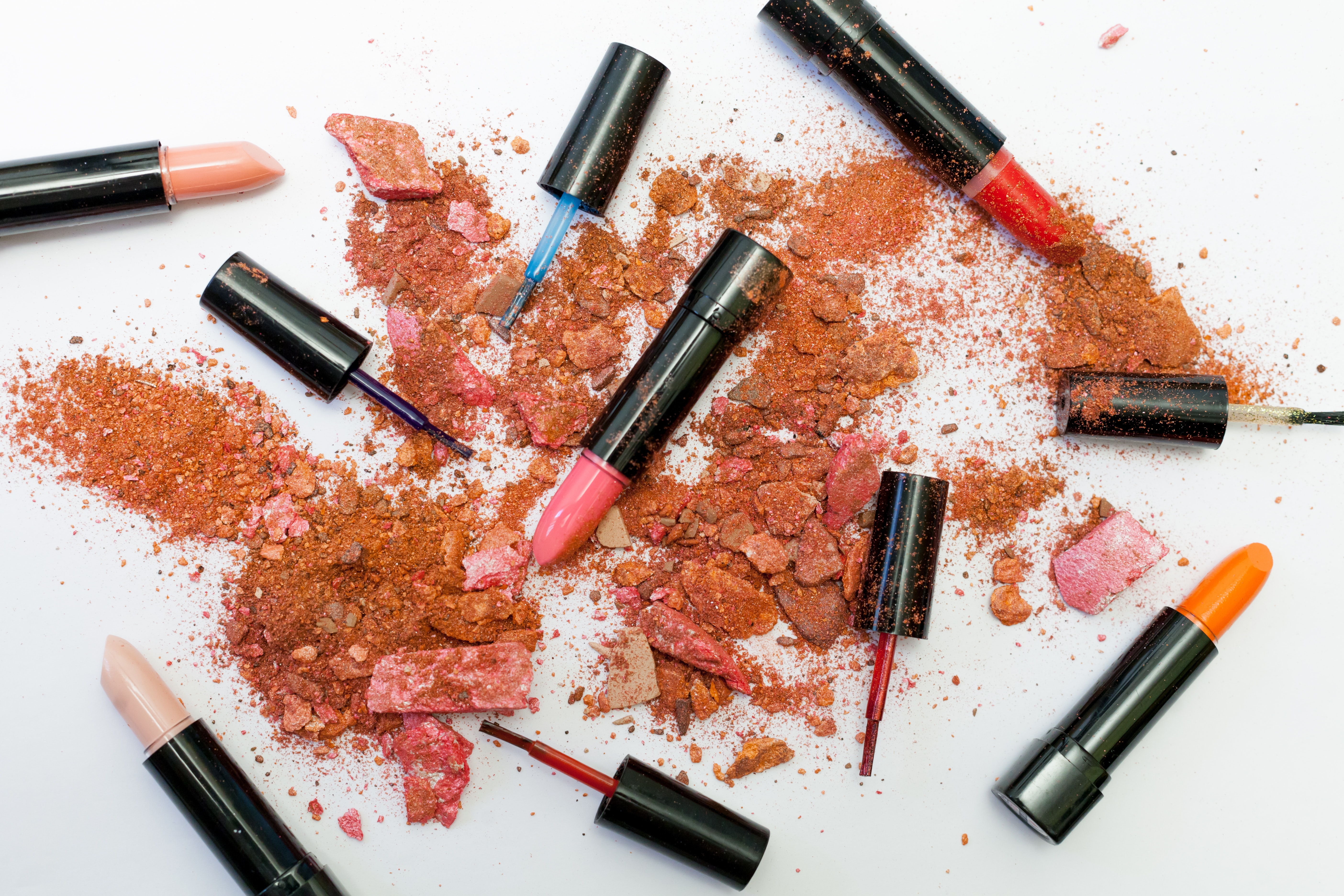The natural beauty market has grown exponentially over the past few years, with consumers demanding more natural alternatives & better transparency when it comes to what they are putting on their bodies. In the commercial skincare & beauty market, there are a number of ingredients that have been tagged as potentially dangerous or harmful to the body, causing symptoms &/or health concerns over time. The most concerning is the number of ingredients that have the ability to cause endocrine disruption such as phthalates, parabens & plastics.
What is an Endocrine Disruptor?
Endocrine disruptors are types of chemicals or other agents which interfere with the bodies endocrine (hormonal) system & have the capacity to influence the functionality of a number of systems including reproductive, neurological, immune & metabolic. Endocrine-disrupting chemicals can work in a number of ways such as:
- Mimicking or partially mimicking the bodies natural hormones such as oestrogen, androgens & thyroid hormones leading to overstimulation of these systems & therefore symptoms of over-stimulation may begin to present.
- Binding to receptors & completely inhibit the bodies own hormones from binding thereby blocking the bodies ability to respond properly to these hormones.
- Block the production & function of our hormones & receptors.
One of the most well-known endocrine-disrupting chemicals in bisphenol A (BPA), a plasticizer commonly used in plastic manufacturing, which has been shown to mimic the activity of our sex hormone oestrogen. There have been many research papers published on the ill health effects of BPA, which ultimately led to BPA being removed from a number of consumer products & ‘BPA free’ frequently listed on packaging. More than 75+ clinical studies have linked exposure to BPA to a number of health concerns including advances in puberty & bringing the age of puberty onset forward (especially in girls), changes in reproductive function & infertility, genital abnormalities in boys, behavioral issues in children & even development of breast cancer….just to name a few.
The real question is do we really want to wait to have this much compelling research about the negative effects of other suspect chemicals before we avoid them? Is it innocent until proven guilty or guilty until proven innocent?
Here are a few ingredients commonly used in skin-care & cosmetics that are best avoided:
Phthalates
Phthalates (pronounced ‘thal-ates’) are a class of chemical which originate within the plastic production market (much like BPA), utilised to make plastics & vinyls soft & flexible. In the cosmetic & beauty market phthalates are commonly used in nail polish, hair spray, fragrance & other personal care products including shampoo. Unfortunately, a number of phthalates have been associated with health risk including endocrine disruption, infertility or reproductive issues & even some cancers.
These are the most commonly used phthalates use in cosmetic products:
- Dibutyl phthalate (DBP) – used in nail polish to avoid cracking
- Dimethyl phthalate (DMP) – used in hair sprays to prevent stiffness by creating a soft film over the hair (these are very problematic as in most cases hair spray is easily inhaled by the user)
- Diethyl phthalate (DEP) – used in fragrances as a solvent & fixative
- Fragrance – because fragrances used in cosmetics are generally proprietary secrets, companies are only required to list the word ‘fragrance’ on the label. Phthalates are commonly used in fragrances.
Phthalates are known endocrine-disrupting chemicals & have the capacity to act as oestrogen, displacing the bodies natural oestrogen & thereby inhibiting its use. Research conducted in 2018 was performed to assess the impact phthalate exposure had on gestation, particularly within the first trimester. It was the first study to assess the impacts of maternal phthalate exposure & the results were quite alarming. It showed phthalate exposure in early pregnancy to be associated with ‘alternations in methylation of critical placental genes that are linked to gene expression’, alternation of DNA methylation resulting in abnormal gene expression & oxidative damage. Dysregulation or changes to the epigenetic marks in the methylation region of the placenta have been associated with developmental abnormalities & placental disorders. A little scary, no?
Mineral Oil & Petrolatum
Mineral oils are generally clear & odourless oils that are derived mainly from petroleum. These specific ingredients are used by the skincare & cosmetic industry mostly for their price (they are really cheap) & fairly long shelf life. Mineral oils are commonly used as a base oil in moisturisers, ointments, body products, baby products & cleansers. Unfortunately, minerals oils do very, very little if anything for the skin & whilst they aren’t necessary carcinogenic or endocrine-disrupting in nature, they are essentially a cheap filler ingredient in skincare to bulk it out & make it feel nice. On labels, mineral oil might be listed as petroleum, parrafin oil, mineral oil, paraffinum liquidum.
Parabens
Parabens are a group of synthetic preservatives commonly used in mainstream skincare & cosmetics to prevent the growth of bacteria in these products. Parabens are also, unfortunately, endocrine-disrupting in nature, due to their oestrogenic effect on the body. A number of clinical studies on a variety of parabens (i.e. isobutyl-, butyl-, isopropyl- and propylparaben) have confirmed the endocrine-disrupting ability of these ingredients, with many reporting hormone signal disruption as the main disturbance. The main finding of these studies showed links between parabens & decreased fertility & reproductive development in females decreased sperm production & lowered testosterone levels in males.
Sodium Lauryl Sulfate (SLS) + Sodium Laureth Sulfate (SLES)
I think most people are familiar with this class of chemicals. They are the ingredients in your products that make them lovely & foamy. Mostly you will find SLS & SLES in shampoo, body wash, toothpaste & face wash as surfactants & foaming agents to make to you feel as though you are effectively cleaning your hair & body because the product is foaming really well. Foaming agents, unfortunately, can disrupt the protective oil layer of the skin (otherwise known as the acid mantle), leading to surface dryness & excessively permeability to other ingredients. SLS/SLES may be detrimental to people with existing skin conditions such as eczema, dermatitis, acne & psoriasis as these ingredients may lead to increases irritation & increase susceptibility to infection & are be avoided.
Propylene Glycol (PG) + Polyethylene Glycol (PEG)
PG & PEGs are odourless & clear liquids used as humectants (retain moisture/prevent moisture loss) & emulsifying (stabiliser) agents in skincare & cosmetics. They are also widely used within the food & pharmaceutical industry. PG & PEGS are used in products to help maintain skin moisture & enhance penetration of product into the skin as they are highly absorbed through both the skin and/or mucous membranes. Whilst PGs are actually deemed to be non-toxic to humans at low concentrations as they are easily metabolised & excreted from the body, there are no long-term studies that confirm their safety when used for long periods of time. PEGS, however, have been known to cause topical reactions such as skin irritation, hives & eczema/dermatitis, as well as enhance skin sensitivity, so are best avoided if skin reactivity is a health concern of yours.
Mindy Duncan is a Bachelor qualified clinical naturopath with special interests in women’s health, menstrual & hormonal health, thyroid function & self-esteem. Mindy is available for consultations via the Vive Clinic on Tuesday & Wednesdays.
Reference & Extra Resources
https://www.niehs.nih.gov/health/topics/agents/endocrine/index.cfm
https://www.nature.com/articles/44517
https://pediatrics.aappublications.org/content/128/5/873.short
https://www.sciencedirect.com/science/article/pii/S0890623813003456
https://toxtown.nlm.nih.gov/chemicals-and-contaminants/phthalates
https://www.cdc.gov/biomonitoring/Phthalates_FactSheet.html
https://www.fda.gov/cosmetics/cosmetic-ingredients/phthalates
https://www.nature.com/articles/s41598-018-24505-w


